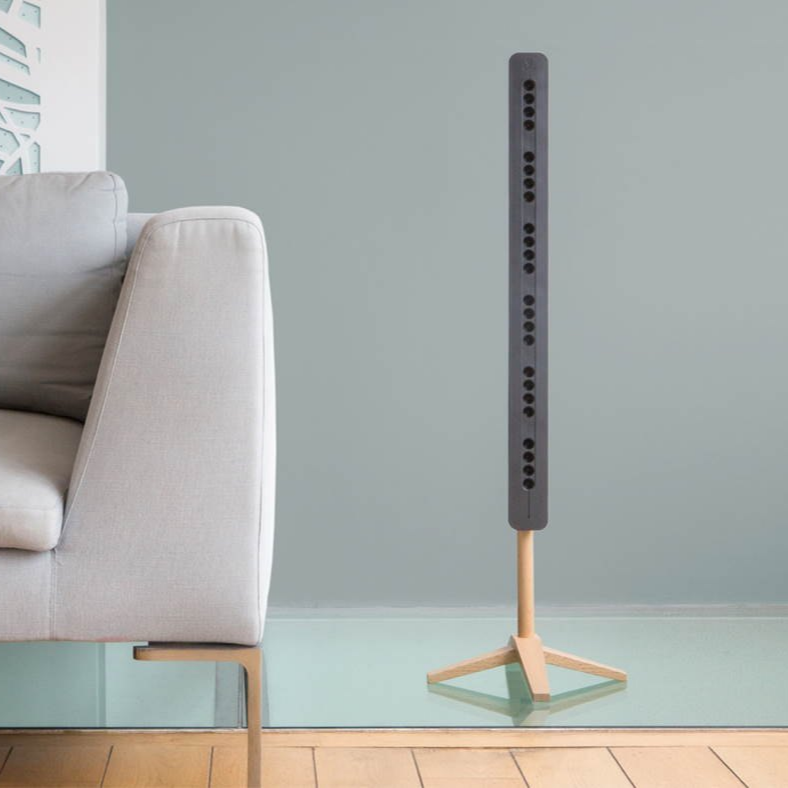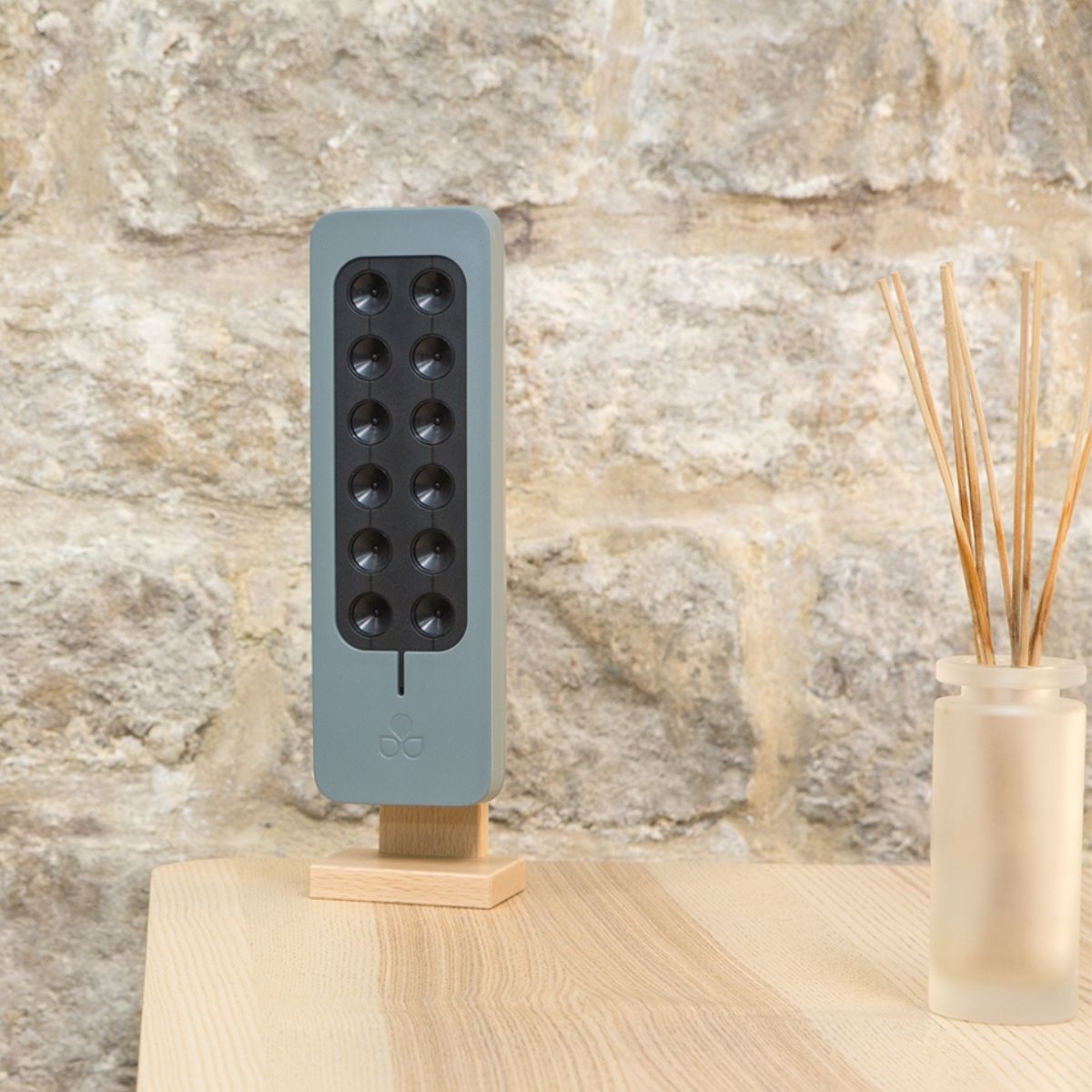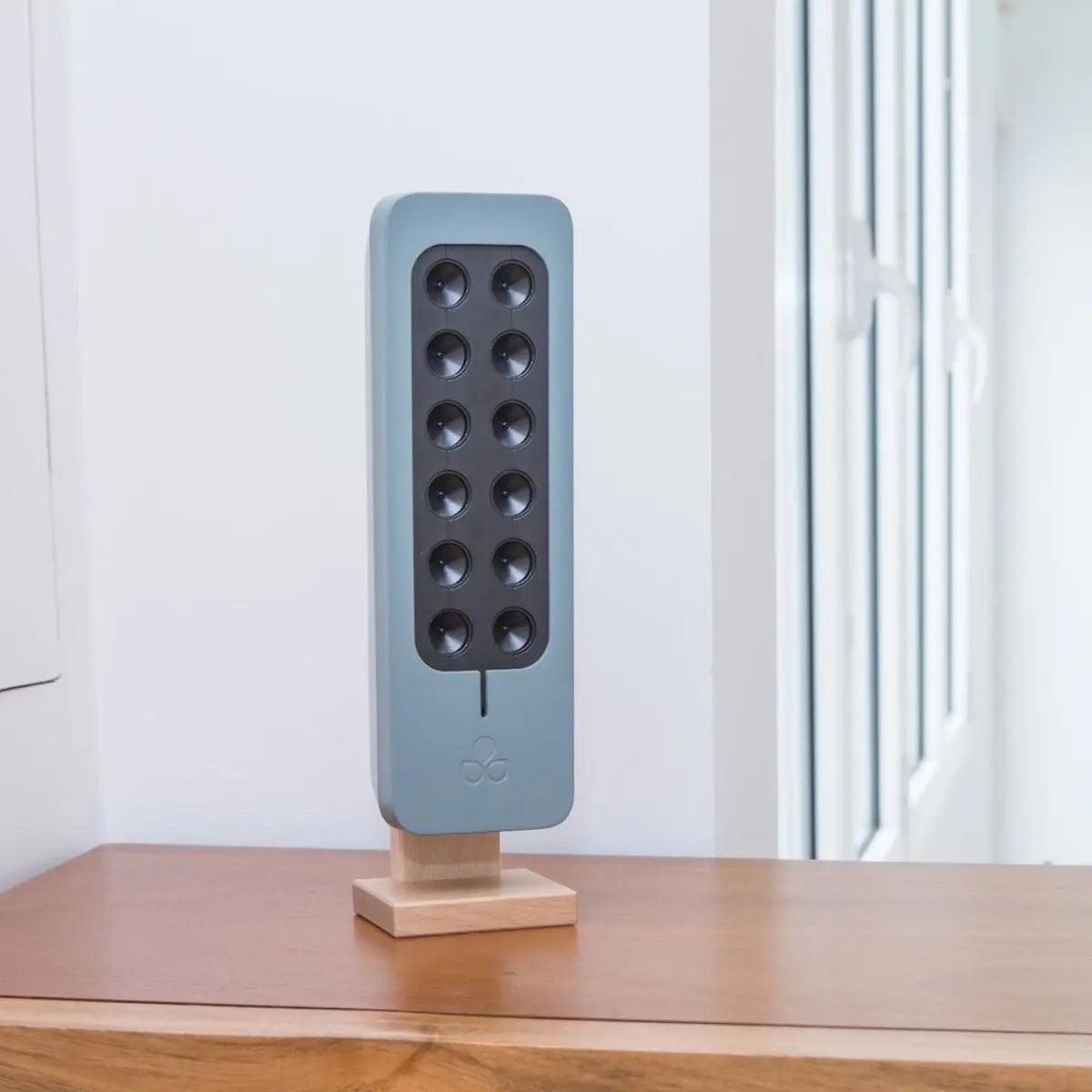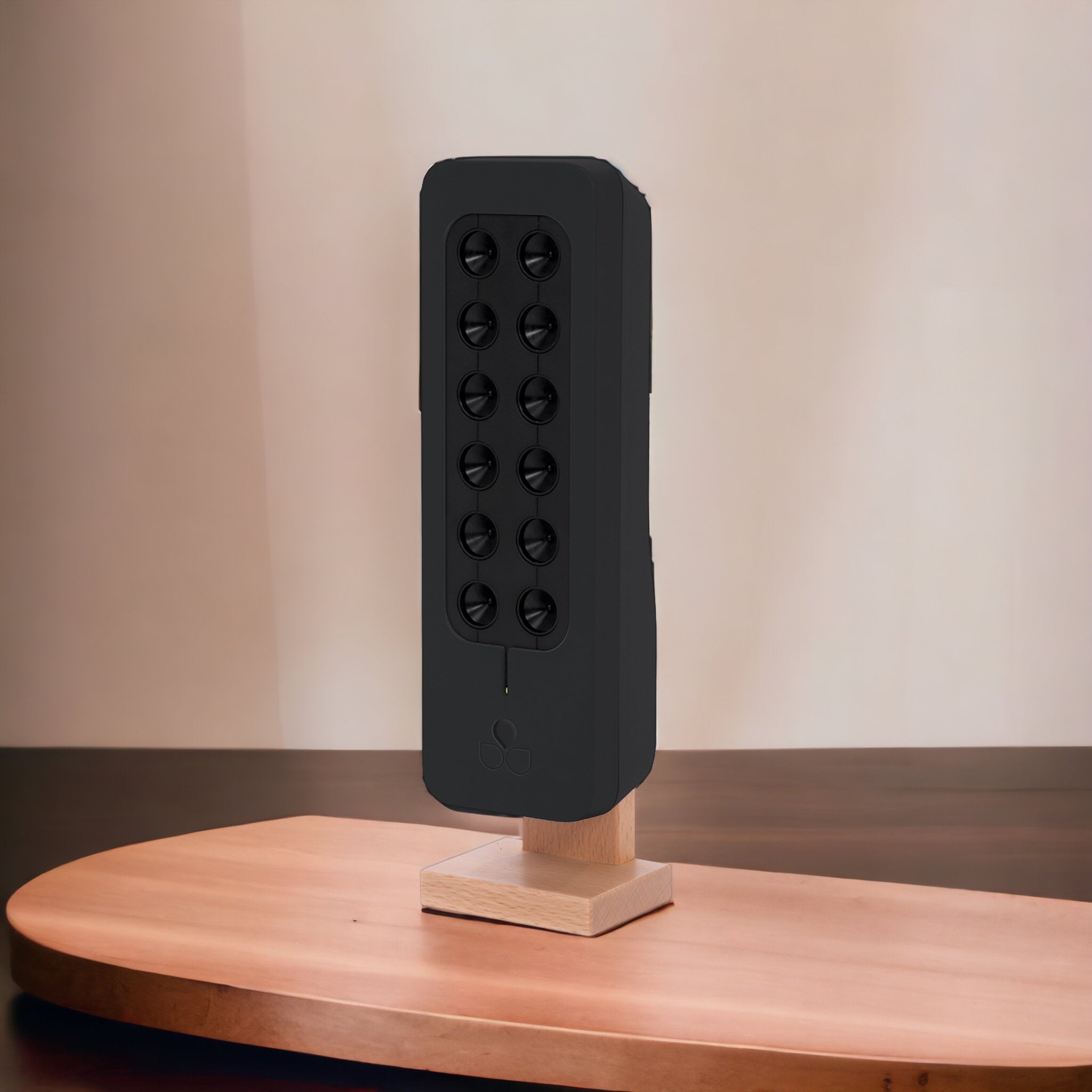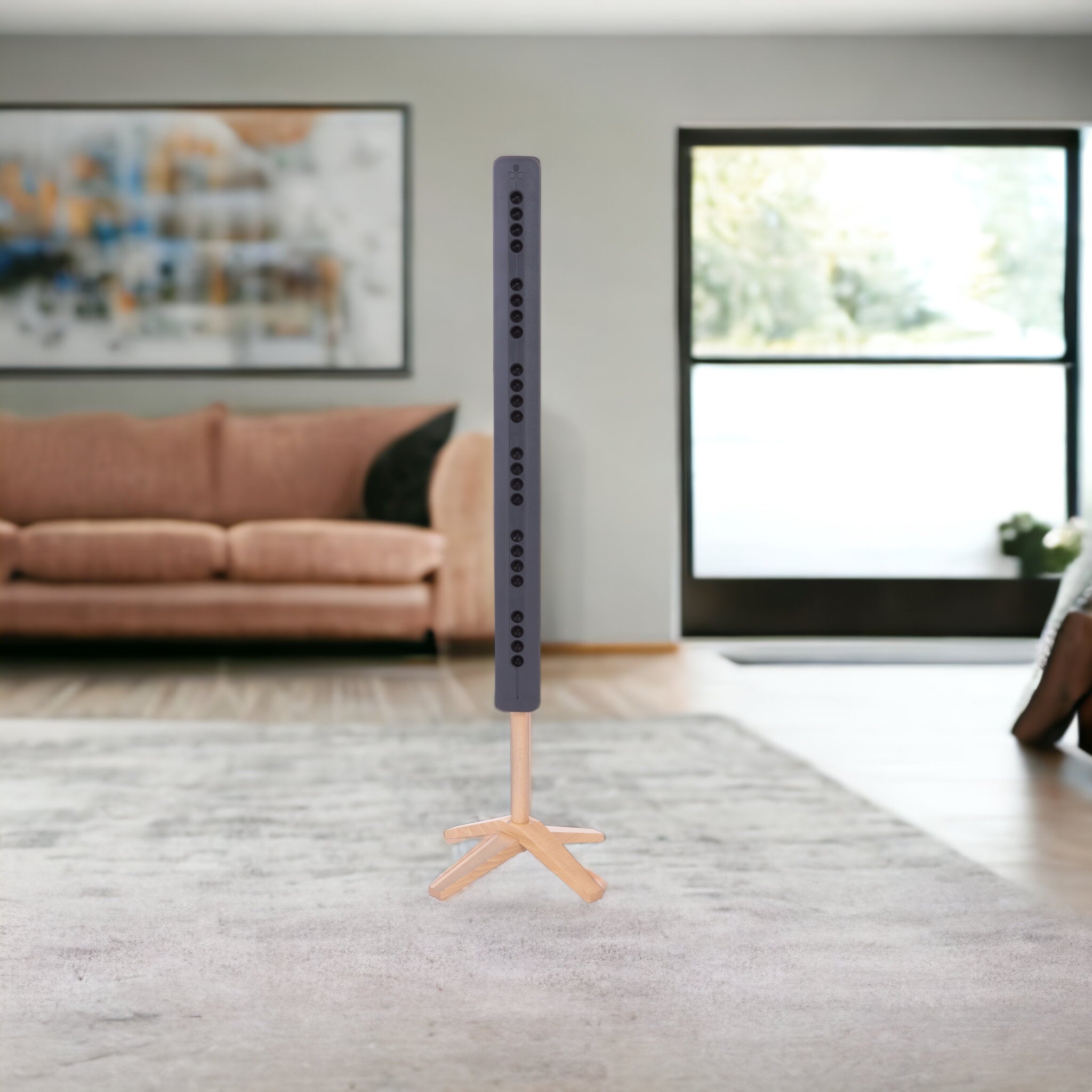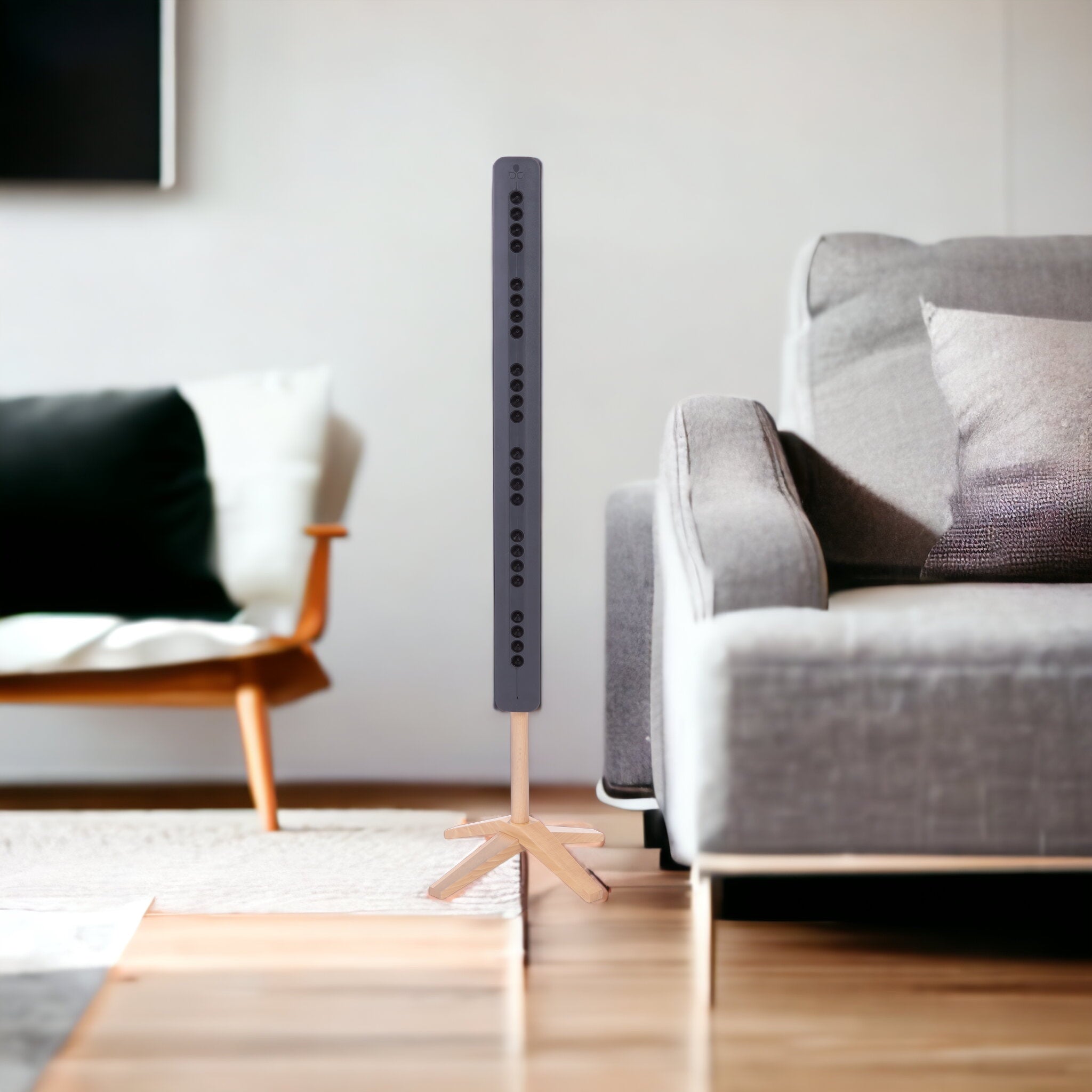„Das Zuhause sollte die Schatztruhe des Lebens sein.“ - Le Corbusier
Unsere Häuser sind unsere Zufluchtsorte. Idealerweise sollten es gesunde und komfortable Räume sein, in denen wir einen Großteil unseres Lebens verbringen. Allerdings können mehrere Faktoren die gesundheitliche Qualität unseres Lebensumfelds beeinträchtigen. Dieser Artikel bietet Einblicke und Vorschläge zur Schaffung eines gesünderen Zuhauses.
Die Vitalität gesunder Luft
Die Qualität der Luft, die wir in Innenräumen atmen, hat einen tiefgreifenden Einfluss auf unsere Gesundheit. Es kann alles beeinflussen, von unserem Energieniveau bis hin zur langfristigen Gesundheit der Atemwege.
Die Auswirkungen schlechter Raumluftqualität
Eine schlechte Luftqualität in Innenräumen kann sich in verschiedenen Gesundheitsproblemen äußern, von leichten Symptomen wie Kopfschmerzen und Lethargie bis hin zu schweren Erkrankungen wie Asthma und Lungenkrebs 1 . Luftverschmutzung in Innenräumen ist ein stiller Killer, der Berichten zufolge jährlich erhebliche Todesfälle verursacht 2 . Am anfälligsten für die Auswirkungen sind ältere Menschen, Säuglinge und Kleinkinder, da ihr Abwehrsystem schwächer ist 3 .
Linderung tierbedingter Allergien
Haustiere können unbeabsichtigt zur Luftverschmutzung in Innenräumen beitragen. Wenn Sie Haustiere haben und zu Allergien neigen, ist es wichtig, Ihr Haustier regelmäßig zu pflegen und den Zugang zu Ihrem Schlafzimmer einzuschränken. Regelmäßiges Staubsaugen kann dazu beitragen, Allergene in Form von Tierhaaren einzudämmen 4 .
Kontraproduktive Maßnahmen: Duftkerzen und Weihrauch
Während es verlockend sein mag, unangenehme Gerüche mit Duftkerzen oder Räucherstäbchen zu überdecken, können solche Maßnahmen kontraproduktiv sein. Bestimmte Kerzen und Räucherstäbchen können krebserregende Giftstoffe ausstoßen und so zur Luftverschmutzung in Innenräumen beitragen 5 . Entscheiden Sie sich stattdessen für geruchlose Reinigungsmittel, um eine frische Umgebung zu erhalten.
Der Feuchtigkeitsfaktor
Die Aufrechterhaltung einer angemessenen Luftfeuchtigkeit ist ein weiterer entscheidender Aspekt eines gesunden Zuhauses. Die Raumluft sollte weder zu trocken noch zu feucht sein.
Schimmel: Der unerwünschte Gast
Übermäßige Luftfeuchtigkeit kann die Schimmelbildung fördern und sich negativ auf die Luftqualität in Innenräumen auswirken 6 . Schimmel kann zu Augen-, Nasen- und Rachenreizungen, vermehrten Asthmaanfällen, chronischer Müdigkeit und Kopfschmerzen führen 7 .
Die Milbenbedrohung
Auch hohe Luftfeuchtigkeit kann die Vermehrung von Milben begünstigen. Diese Parasiten gedeihen unter feuchten Bedingungen und ernähren sich von menschlicher Haut, Tierhaaren und Schimmel 8 . Die Vermeidung von Feuchtigkeit und hohen Temperaturen kann ihre Ausbreitung begrenzen.
Belüftung: Ein Hauch frischer Luft
Eine ordnungsgemäße Belüftung ist für die Aufrechterhaltung der Raumluftqualität von entscheidender Bedeutung. Wenn Ihr Zuhause nicht über ein mechanisches Lüftungssystem verfügt, ist es wichtig, durch regelmäßiges Öffnen der Fenster 9 für eine ausreichende Luftzirkulation zu sorgen oder diese aufrechtzuerhalten.
Ein ruhiges Zuhause: Jenseits der Luftqualität
Die Schaffung eines gesunden Zuhauses geht über die Luftqualität hinaus. Dazu gehört auch, ein ruhiges, harmonisches Wohnumfeld zu schaffen.
Die Bedeutung der Schalldämmung
Unerwünschter Lärm kann eine erhebliche Ursache für Stress und Müdigkeit sein und die Konzentration, Ruhe und den Schlaf beeinträchtigen 10 . Eine gute Isolierung kann dazu beitragen, eine ruhige Umgebung zu schaffen, insbesondere wenn Sie in einer lauten Gegend wohnen.
Die Rolle von Zimmerpflanzen
Auch wenn Zimmerpflanzen keinen nennenswerten Einfluss auf die Luftverschmutzung in Innenräumen haben, können sie Ihrem Zuhause einen Hauch von Natur und Harmonie verleihen 11 . Stellen Sie sicher, dass sie nicht allergen sind und gießen Sie sie regelmäßig, ohne dass das Wasser stagniert.
Feng Shui: Harmonisierung Ihres Raumes
Feng Shui, die alte chinesische Praxis, die auf dem Energiefluss oder „Chi“ basiert, kann dabei helfen, einen harmonischen Wohnraum zu schaffen 12 . Ein ausgewogenes Zuhause nach Feng Shui-Prinzipien fördert Gesundheit und Wohlbefinden.
Zusammenfassend lässt sich sagen, dass es bei der Schaffung eines gesunden Zuhauses um mehr geht, als es nur sauber zu halten. Es erfordert Liebe zum Detail und die Berücksichtigung von Faktoren wie Luftqualität, Luftfeuchtigkeit, Belüftung und sogar dem Energiefluss im Raum. Indem wir diese Faktoren berücksichtigen, können wir einen Zufluchtsort schaffen, der uns nicht nur Schutz bietet, sondern auch unsere Gesundheit und unser Wohlbefinden fördert.
Der Artikel wurde auf der Grundlage verschiedener zuverlässiger Quellen erstellt und zielt darauf ab, die Schaffung eines gesünderen Lebensumfelds zu fördern. Die geäußerten Ansichten basieren auf Recherchen und stellen keine professionelle Beratung dar.
Fußnoten
-
Observatorium für Raumluftqualität, Frankreich ↩
-
Observatorium für Raumluftqualität, Frankreich ↩
-
Observatorium für Raumluftqualität, Frankreich ↩
-
Empfehlungen von Allergologen ↩
-
Forschung zur Raumluftqualität ↩
-
Observatorium für Raumluftqualität, Frankreich ↩
-
Observatorium für Raumluftqualität, Frankreich ↩
-
Forschung zur Raumluftqualität ↩
-
Verein zur Förderung der Raumluftqualität (APQAI) ↩
-
Forschung zur Raumluftqualität ↩
-
Französisches Forschungsprogramm zur Phytoreinigung der Luft „Phytair“ ↩
-
Feng Shui-Prinzipien ↩

